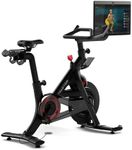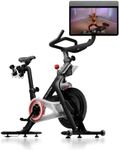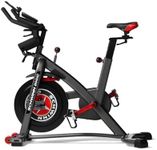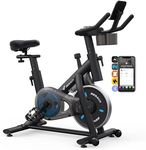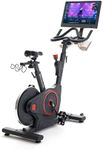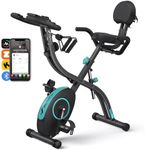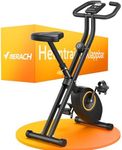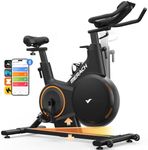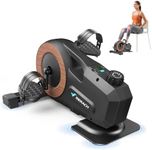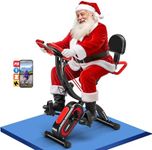Buying Guide for the Best Exercise Bike
Choosing the right exercise bike can significantly enhance your fitness journey. It's important to consider various factors to ensure the bike meets your needs and preferences. Here are some key specifications to look at when selecting an exercise bike, along with explanations to help you make an informed decision.Type of Exercise BikeExercise bikes come in different types, including upright, recumbent, and indoor cycling bikes. Upright bikes are similar to traditional bicycles and are great for a full-body workout. Recumbent bikes have a more comfortable, reclined seating position, making them ideal for those with back issues or limited mobility. Indoor cycling bikes, often used in spin classes, are designed for high-intensity workouts. Choose the type that aligns with your fitness goals and comfort preferences.
Resistance LevelsResistance levels determine how challenging your workout can be. Higher resistance levels allow for more intense workouts, while lower levels are suitable for beginners or those looking for a lighter exercise. Look for a bike with adjustable resistance to accommodate your fitness progression. If you're a beginner, start with a bike that offers a wide range of resistance levels so you can gradually increase the intensity as you get fitter.
Flywheel WeightThe flywheel is the part of the bike that creates resistance and smoothness in your ride. A heavier flywheel generally provides a smoother and more stable ride, which is important for a comfortable workout experience. Flywheels can range from around 15 to 50 pounds. If you plan on doing high-intensity workouts, a heavier flywheel is recommended. For casual or moderate use, a lighter flywheel may suffice.
AdjustabilityAdjustability refers to how much you can customize the bike to fit your body. This includes adjustable seat height, seat position, and handlebar height. Proper adjustability ensures that you can find a comfortable and ergonomic riding position, which is crucial for preventing injuries and maximizing workout effectiveness. Make sure the bike you choose allows for easy adjustments to accommodate your height and body type.
Display and Console FeaturesThe display and console features provide important workout data such as time, distance, speed, calories burned, and heart rate. Some advanced models offer additional features like workout programs, Bluetooth connectivity, and compatibility with fitness apps. Consider what data and features are important to you. If you like tracking your progress and staying motivated with varied workouts, look for a bike with a comprehensive console.
Comfort and ErgonomicsComfort and ergonomics are essential for an enjoyable workout experience. Look for a bike with a well-padded seat, comfortable handlebars, and pedals with adjustable straps. If possible, try out the bike before purchasing to ensure it feels comfortable and suits your body. A bike that is uncomfortable to use will likely end up gathering dust, so prioritize comfort to ensure you stick with your fitness routine.
Size and PortabilityConsider the size of the exercise bike and the space you have available at home. Some bikes are more compact and foldable, making them easier to store when not in use. Portability features like transport wheels can also make it easier to move the bike around. Measure your available space and choose a bike that fits comfortably without overcrowding your room.
Weight CapacityWeight capacity refers to the maximum user weight that the bike can support. It's important to choose a bike that can safely accommodate your weight to ensure stability and durability. Check the manufacturer's specifications for the weight limit and select a bike that exceeds your current weight to allow for any future weight changes.
